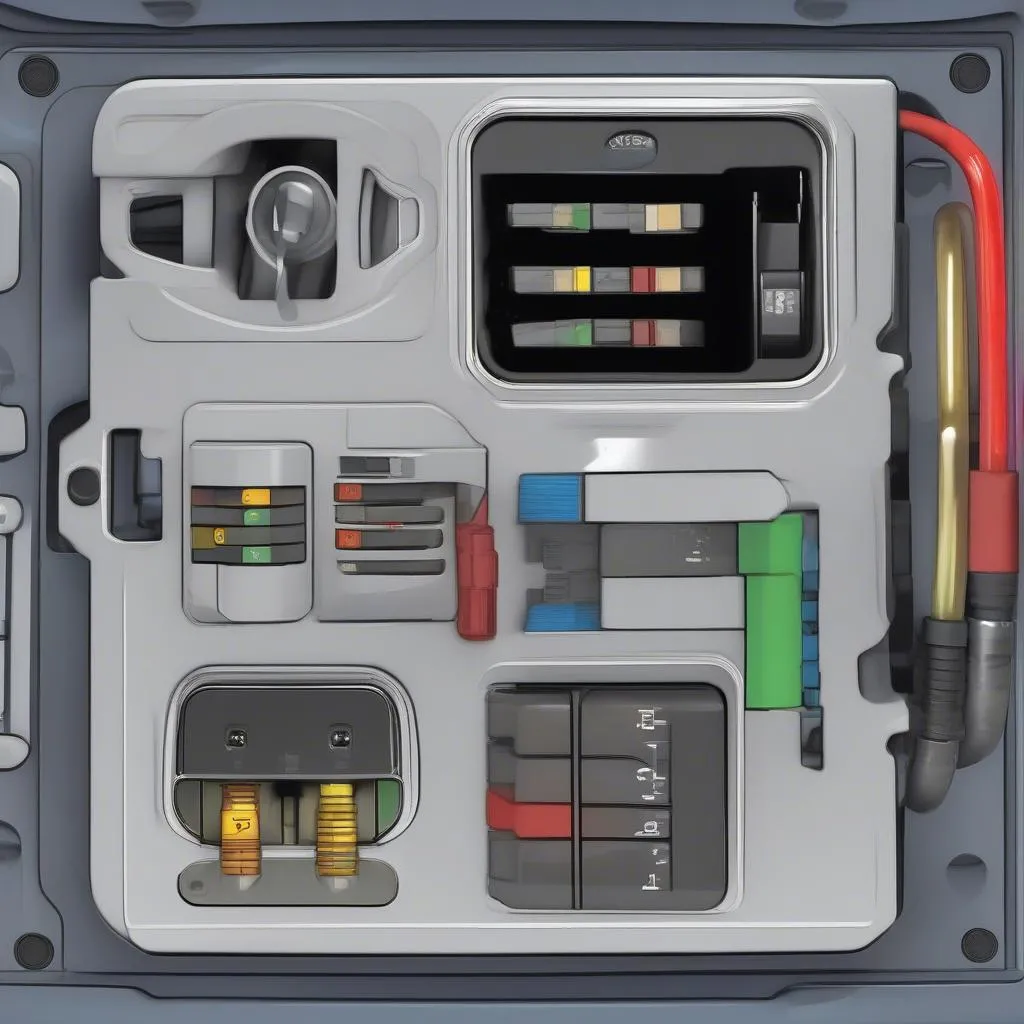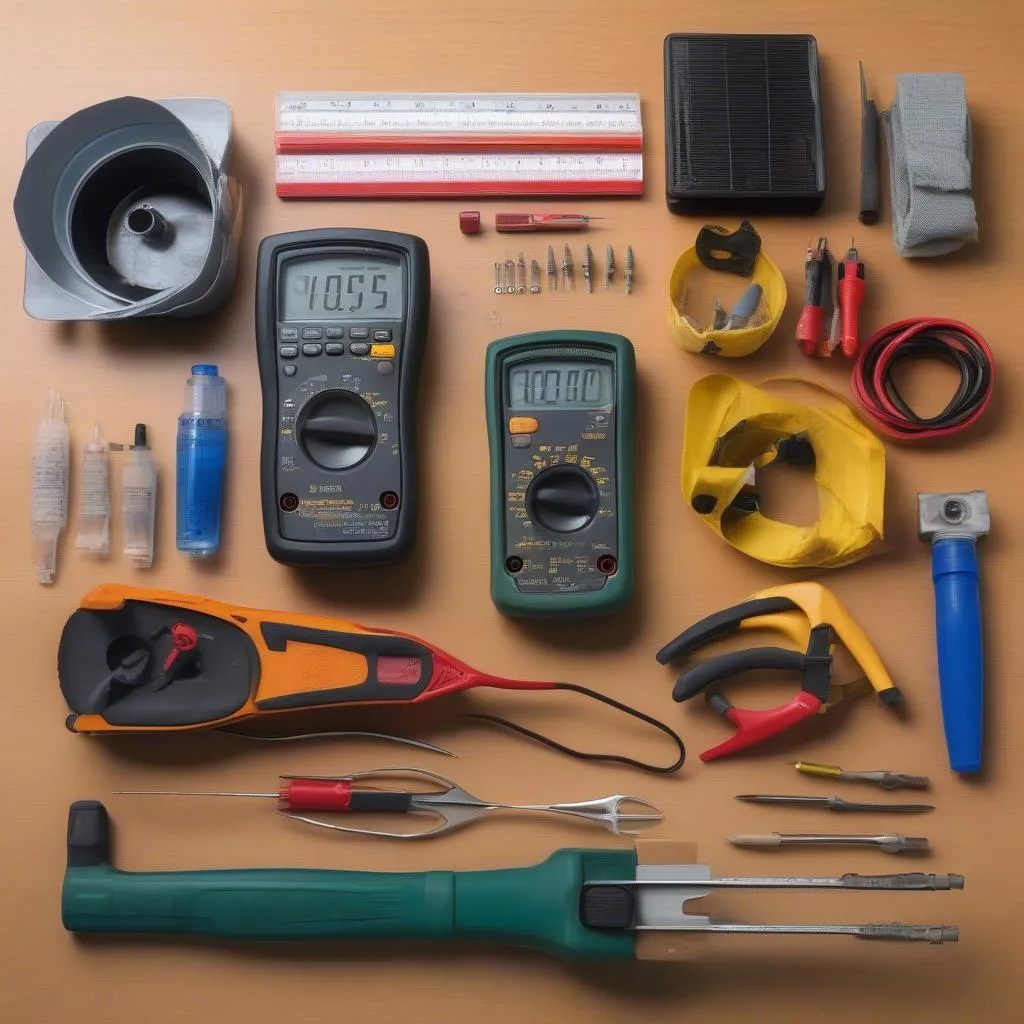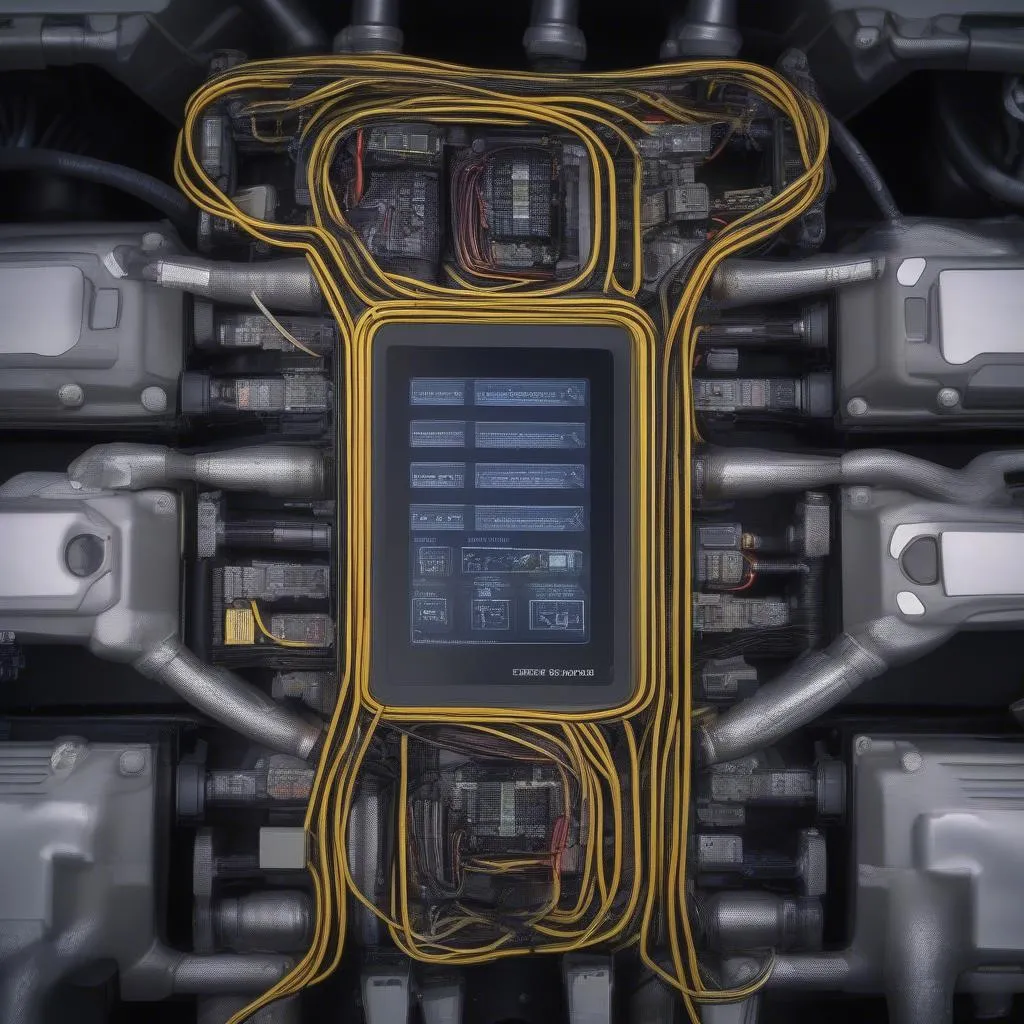Is your Mercedes GL overheating? Is the cooling fan acting up or not coming on at all? A malfunctioning cooling fan can lead to serious engine damage and costly repairs. This comprehensive guide will walk you through the common causes of Mercedes GL cooling fan problems and provide a step-by-step guide on how to fix them.
Common Causes of Cooling Fan Failure
Before we dive into the solution, it’s crucial to understand what might be causing your Mercedes GL cooling fan to fail. Here are some common culprits:
- Faulty Cooling Fan Motor: Over time, the cooling fan motor can wear out or burn out, especially with frequent use or exposure to extreme temperatures.
- Blown Fuse or Relay: The cooling fan system relies on fuses and relays to function correctly. A blown fuse or a faulty relay can interrupt the flow of power to the fan, preventing it from operating.
- Malfunctioning Coolant Temperature Sensor: The coolant temperature sensor is responsible for signaling the cooling fan to turn on when the engine reaches a certain temperature. If the sensor malfunctions, it may not send the signal, causing the fan to remain off.
- Wiring Issues: Damaged or corroded wiring within the cooling fan circuit can disrupt the electrical connections, leading to fan failure.
- Faulty Fan Control Module: In some Mercedes GL models, a separate fan control module manages the operation of the cooling fan. If this module fails, it can cause various cooling fan problems.
 Mercedes GL Engine Bay
Mercedes GL Engine Bay
Identifying the Problem
To effectively fix your Mercedes GL cooling fan, you need to accurately identify the root cause of the issue. Here’s how:
- Check the Fuse Box: Consult your owner’s manual to locate the fuse box and identify the fuse associated with the cooling fan. Inspect the fuse for any signs of damage or a blown filament.
- Inspect the Relays: Similarly, locate the cooling fan relay in the relay box (usually near the fuse box) and check for any signs of malfunction. You can swap the cooling fan relay with a known good relay to see if that resolves the issue.
- Test the Coolant Temperature Sensor: Using a multimeter, you can test the resistance of the coolant temperature sensor. Compare your readings to the manufacturer’s specifications to determine if the sensor is faulty.
- Inspect the Wiring: Carefully examine the wiring harness and connectors associated with the cooling fan for any signs of damage, corrosion, or loose connections.
 Car Fuse Box Diagram
Car Fuse Box Diagram
Equipment You’ll Need
Before you begin any repairs, gather the following tools and materials:
- Replacement cooling fan (if necessary)
- New fuses and relays (if required)
- Coolant temperature sensor (if faulty)
- Multimeter
- Screwdriver set
- Protective gloves and eyewear
 Mechanic Tools Car Repair
Mechanic Tools Car Repair
Fixing the Mercedes GL Cooling Fan: A Step-by-Step Guide
Once you’ve identified the culprit behind your cooling fan woes, follow these steps to get it back in working order:
-
Disconnect the Battery: Always disconnect the negative battery cable before working on any electrical components in your vehicle.
-
Access the Cooling Fan: Depending on your specific Mercedes GL model, you’ll need to access the cooling fan by removing the front bumper cover, the engine splash shield, or other components. Refer to your owner’s manual or a repair manual for specific instructions.
-
Inspect the Cooling Fan: With the fan accessible, visually inspect the fan blades for any signs of damage or obstruction. Spin the fan blade by hand to check for any binding or resistance, which could indicate a failing motor.
-
Test the Cooling Fan Motor: If you suspect a faulty motor, use a multimeter to test its continuity and resistance. Connect the multimeter leads to the motor terminals and compare your readings to the manufacturer’s specifications. If the readings are outside the acceptable range, replace the cooling fan motor.
-
Replace the Cooling Fan: If the motor is faulty, you’ll need to replace the entire cooling fan assembly. Disconnect the electrical connector and any mounting bolts holding the fan in place. Install the new cooling fan by reversing the removal steps.
-
Address Other Issues: If your diagnosis points to a faulty fuse, relay, coolant temperature sensor, or wiring issue, replace the problematic component with a new one. Ensure all electrical connections are secure and free of corrosion.
-
Reassemble and Test: After completing the repairs, reassemble all removed components and reconnect the battery. Start the engine and monitor the cooling fan to confirm that it’s functioning correctly.
FAQs: Mercedes GL Cooling Fan Problems
Q: Can I drive my Mercedes GL with a broken cooling fan?
A: It’s highly discouraged to drive with a broken cooling fan, especially for extended periods or in hot weather. Without a functioning cooling fan, your engine is at high risk of overheating, which can cause severe damage and expensive repairs.
Q: How often should I replace my Mercedes GL cooling fan?
A: While there’s no set replacement interval for cooling fans, it’s generally recommended to inspect them for wear and tear during routine maintenance. Factors like driving conditions and climate can affect the lifespan of a cooling fan.
Q: Can I use aftermarket parts to fix my Mercedes GL cooling fan?
A: While aftermarket parts might be more affordable, using genuine Mercedes-Benz parts is always recommended to ensure compatibility and optimal performance.
Q: What is Cardiagtech and can it help diagnose my Mercedes GL cooling fan problem?
A: CARDIAGTECH offers a range of professional automotive diagnostic tools and software that can help you pinpoint issues with your Mercedes GL, including cooling fan problems. You can find more information about CARDIAGTECH products here.
Conclusion
Addressing cooling fan problems promptly is crucial to prevent costly engine damage. By following this comprehensive guide, you can diagnose and fix your Mercedes GL cooling fan like a pro. Remember to prioritize safety and always consult a qualified mechanic if you’re unsure about any aspect of the repair process.



